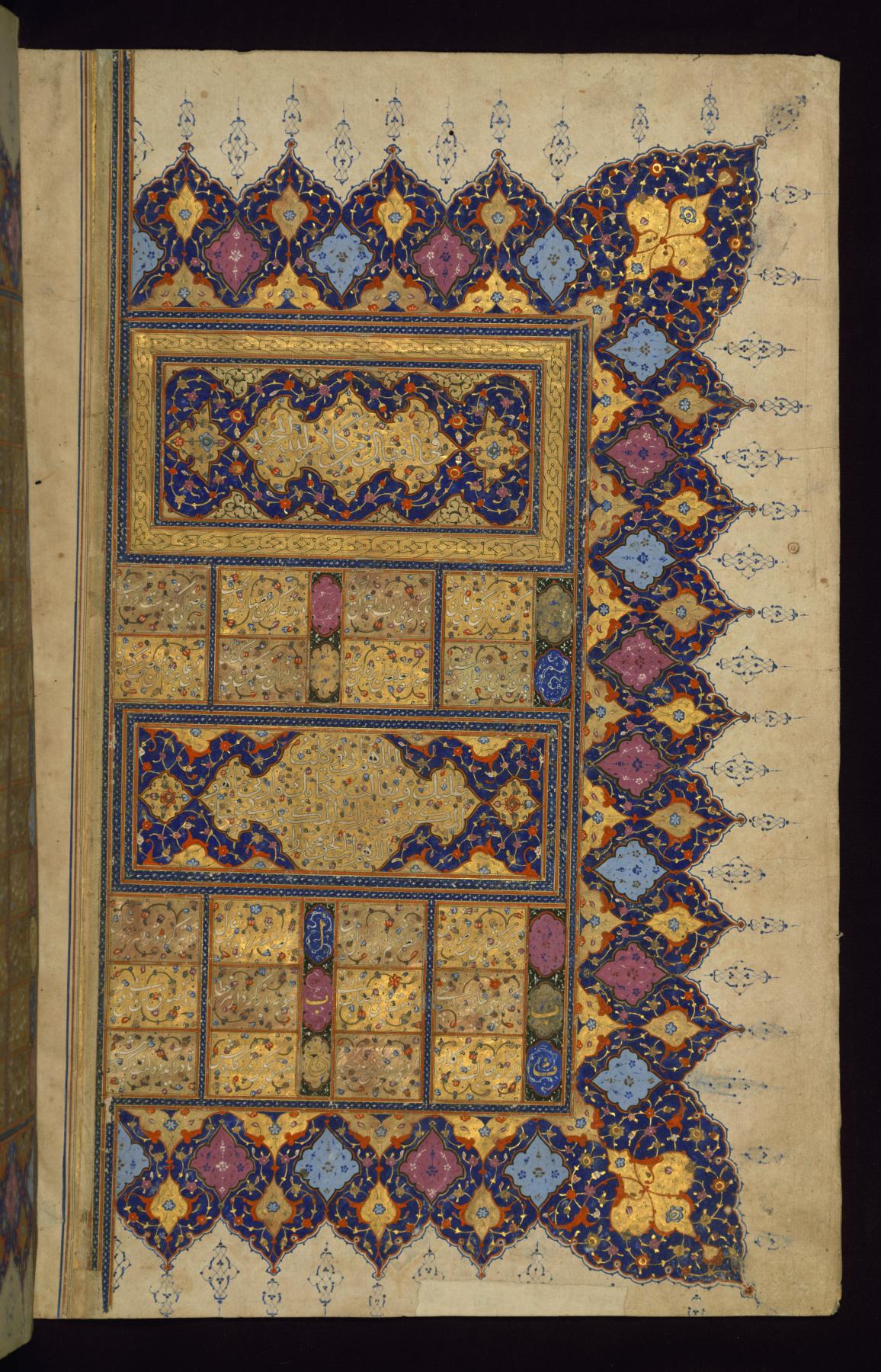Leaf from Qur'an: Right Side of a Double-page Table of Divination (Bibliomancy or tafa'ul)
(Manuscripts and Rare Books, Islamic World , Islamic Manuscripts)
This folio from Walters manuscript W.569 contains the right side of a table of divination (bibliomancy or tafa'ul) executed in Arabic in Tawqi' script and in Persian in Nasta'liq script. The top inscription reads: fi al-tafa<'>ul min kalam Allah al-Majid.
This illuminated copy of the Qur'an was produced in the eleventh century AH / seventeenth CE in Iran. Apart from using a number of scripts, such as naskh, muḥaqqaq, and tawqīʿ, the manuscript features six pairs of decorated pages; two illuminated headpieces; and chapter headings, interlinear illumination, and marginal decoration. The Qur'anic text begins on fol. 2b and ends on fol. 331a. It is followed by a prayer (duʿāʾ) and a table of divination (taf'ul) in Arabic and Persian (fols. 332b-333a).The black leather binding has a central piece in the form of a diamond with pendants on four sides. The inner boards, with their traditional dentelle decoration, feature text from the "verse of the throne" (āyat al-kursī), 2:255-6, which is inscribed in the outer frame.
Provenance
Provenance (from the French provenir, 'to come from/forth') is the chronology of the ownership, custody, or location of a historical object. Learn more about provenance at the Walters.
Henry Walters, Baltimore; by bequest to Walters Art Museum, 1931.
Exhibitions
| 2007 | Speaking the Word of God: Illuminated Korans from the Walters Art Museum. The Walters Art Museum, Baltimore. |
Geographies
Iran (Place of Origin)
Measurements
H: 15 3/16 x W: 10 1/16 in. (38.5 x 25.5 cm)
Credit Line
Acquired by Henry Walters
Location in Museum
Not on view
Accession Number
In libraries, galleries, museums, and archives, an accession number is a unique identifier assigned to each object in the collection.
In libraries, galleries, museums, and archives, an accession number is a unique identifier assigned to each object in the collection.
W.569.332B



